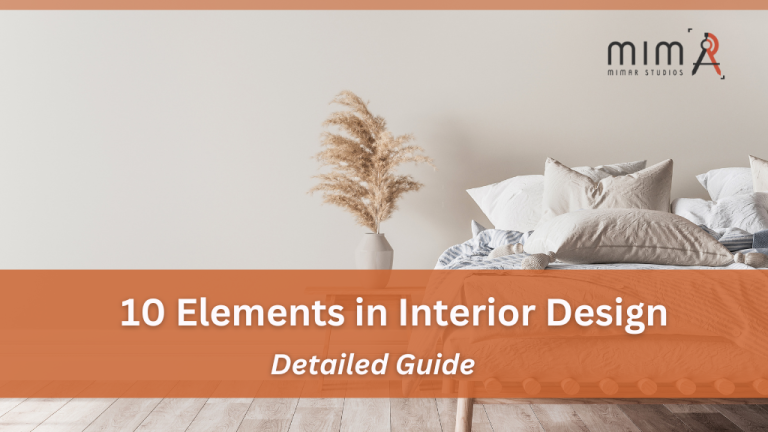
Interior design is more than just making a space look good; it’s about creating functional and aesthetically pleasing environments. An interior designing company focuses on enhancing the interior spaces of homes, offices, or any other type of building. They work with clients to understand their needs and preferences and then use their expertise to create spaces that are both beautiful and functional.
Now, let’s talk about how mimAR can help you sell your real estate. mimAR is an innovative technology that uses augmented reality to create virtual tours of properties. By using mimAR, you can give potential buyers a realistic sense of what it would be like to live in the space, helping them visualize themselves in the home. This can help speed up the sales process and increase the likelihood of a successful sale.
When it comes to interior design, there are several key elements that designers consider to create a balanced and harmonious space. These include space, line, form, light, color, texture, and pattern. By carefully considering each of these elements, designers can create spaces that are not only beautiful but also functional and comfortable. Whether you’re designing a home, office, or any other type of space, paying attention to these elements is essential for creating a successful interior design.
An interior design company uses behavior science to create functional rooms in buildings. The science includes determining the shape of the walls and floors of each room.
A professional interior design company work very closely with architects to understand interior architecture and design the interior spaces. In order to handle a project in interior design, the expert needs to have extensive experience within the construction industry.
Read Now: Innovative technology (Proptech) used in real estate!
Creating aesthetically pleasing spaces and rooms is the role of an interior designing company. From simple indoor and outdoor environments to hotel lobbies and luxurious mansions, the interior experts design spaces for homeowners, corporations, and big corporations.
All interior designers strive to create spaces that are functional, attractive, and safe while meeting each client’s specific needs.
A variety of spaces can be created by interior designers using a variety of strategies, such as;
Furniture placement, Color palettes, Decorations, and Functional decor – from beautiful, functional living rooms to offices that people are eager to work in. It is imperative that artwork, lighting, window treatments, and flooring are coordinated in order to achieve an overall look that meets the client’s expectations.
Here is all you need to know about interior design and interior design company!
As an interior design company, we at mimAR believe interior design is both the science and the art of incorporating space, which has a great deal to do with the way our brains and bodies react to space around us. Interior designers’ job is to shape people’s feelings and make them feel good in a way that makes them want to stay in a room for as long as they can.
Lines (Horizontal, Vertical, Dynamic): Lines are used to shape and define a space. Horizontal lines create a sense of stability and calmness, while vertical lines give a feeling of strength and height. Dynamic lines add energy and movement to a space.
Shape: Shape refers to the outline of an object or the silhouette of a space. It can be geometric, organic, or abstract and contributes to the overall style and feel of a room.
Pattern: Patterns add interest and visual appeal to a space. They can be found in textiles, wallpaper, flooring, or even artwork, and can range from simple to complex designs.
Lighting (Natural or Artificial): Lighting is essential for setting the mood and atmosphere of a room. Natural light from windows can create a sense of openness and warmth, while artificial lighting can be used to highlight specific areas or create different moods.
Color: Color has a significant impact on the look and feel of a space. It can evoke emotions, create illusions of space, and influence how we perceive a room. Choosing the right colors is crucial for achieving the desired atmosphere and style.
Texture (Actual and Visual Texture): Texture adds depth and tactile quality to a room. Actual texture refers to the physical surface of an object, such as wood grain or fabric, while visual texture is the perception of texture through sight, which can be created using patterns or finishes.
Balance: Balance is the equal distribution of visual weight in a room. It can be achieved through symmetrical or asymmetrical arrangements of furniture and decor, and helps create a sense of harmony and stability.
Rhythm: Rhythm creates a sense of movement and flow in a space. It can be achieved through repetition of color, pattern, or texture, and helps guide the eye through a room.
Emphasis: Emphasis, also known as focal point, is the area or object in a room that draws the most attention. It can be achieved through color, contrast, or scale, and helps create visual interest and hierarchy within a space.
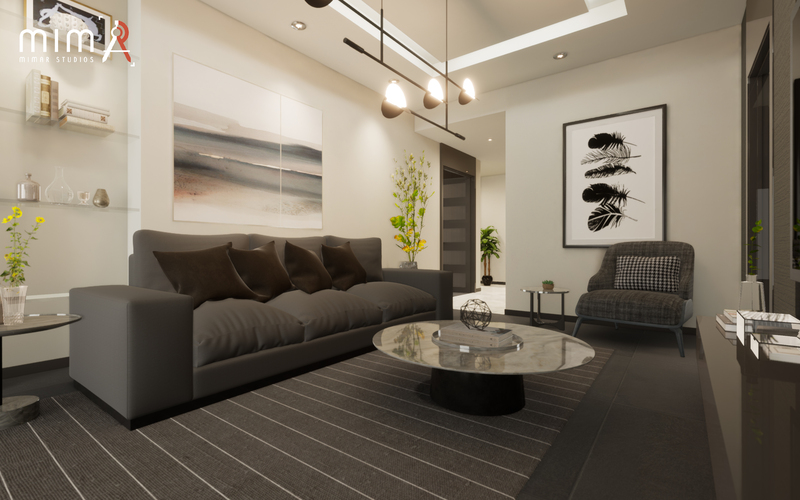
In terms of interior design, all seven elements above are essential, but the most important is space. As the name implies, interior design involves creating spaces within a building. It is possible to divide space into two categories: positive and negative.
Positive space refers to the space occupied by decorations, such as a living room couch, dining table, and kitchen island etc.
Negative space is empty space in a room that gives it an airy and “open” feeling.
An interior designer must also consider the spaces above the furniture in a 2D floor plan, in addition to the positive and negative spaces:
The challenge is finding the right balance between these two forms of space – not too crowded, not too sparse. Then it’s uniquely tailored for you based on your house.
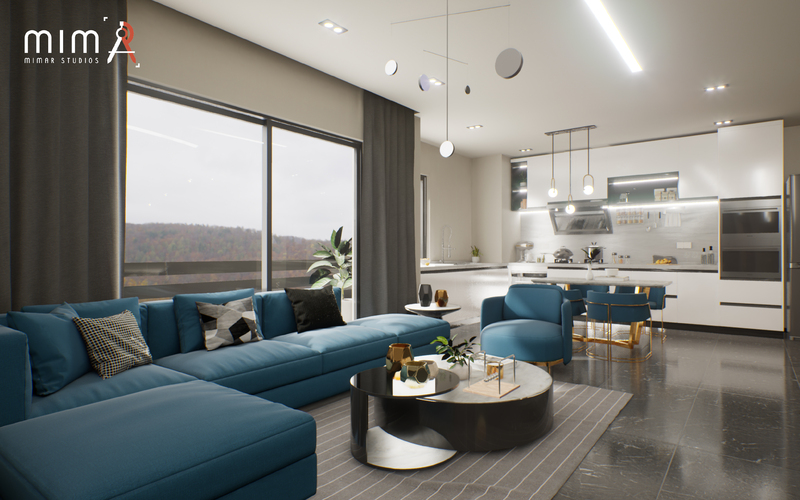
The line is another key element that interior designers use to manipulate our perception of space. Line types are divided into three categories:
Horizontal lines, for instance, create a sense of earthiness, security, warmth, and stability. On the other hand, vertical lines make a space seem spacious and lofty. Let’s explain them in detail.
Horizontal lines can create a peaceful, tranquil atmosphere in your home. Their presence grounds the space and makes it feel bigger and more spacious. In contrast, if you overuse this design element, your space could quickly become dull. Without vertical and dynamic lines, your space would lack visual appeal.
Vertical lines attract your attention in the opposite direction from horizontals. As an example, if your home features tin ceiling tiles, an interior designer would integrate vertical lines that subconsciously draw your eye upwards to emphasize this feature. In contrast, overuse of vertical lines can make people feel constrained.
Movement and stimulation are implied by these lines. These lines and patterns are active and encourage your eye to walk in a certain direction or notice a pattern.
Lines with zigzag, angular, and curving designs fall into this category, since each adds a different feeling to the room. In contrast, smooth and curvy lines enhance softness, smoothness, balance and energy in a room.
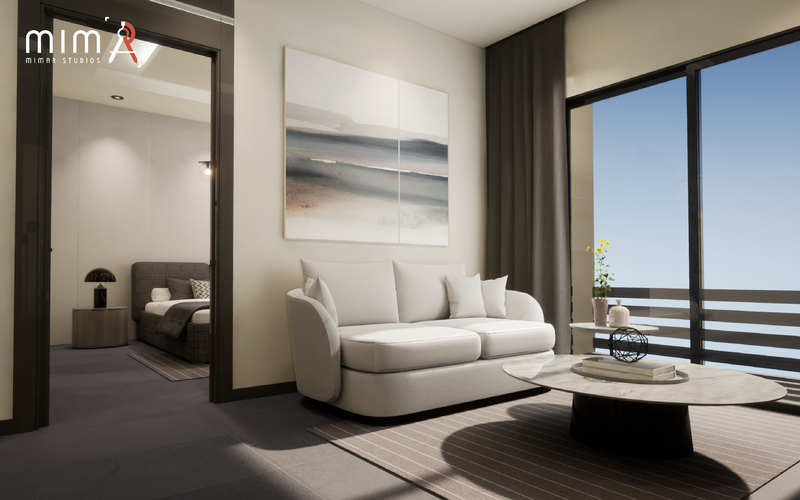
An object produced by a collection of lines is called a form. Forms are made up of lines, whether horizontal, vertical, or dynamic. Geometric (angular) or natural (curved) shapes are both possible. You can also find them open or closed. If your interior designer is well-versed in your style, he/she can mix and match forms to give your home any aesthetic you prefer, regardless of whether you want it to be earthy, modern, warm or cool.
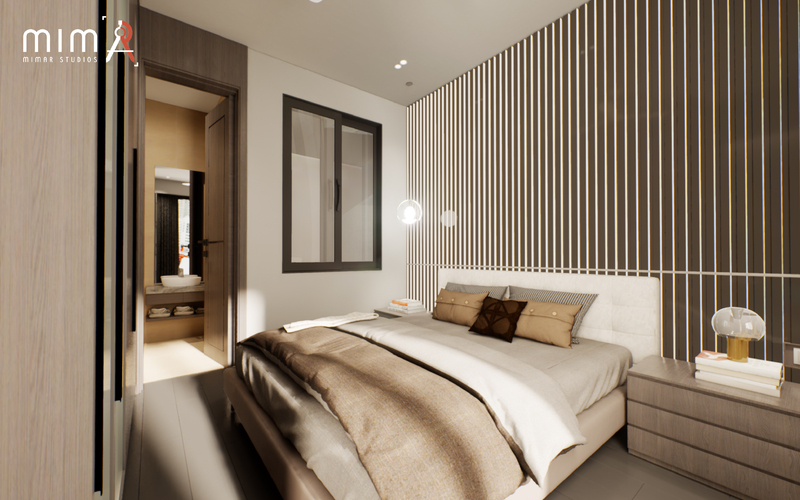
Forms and lines together make up a pattern, which belongs to the “line” family of elements. Just like shapes, patterns compliment a specific part of your home, whether it’s the ceiling, stairs, or walls. If you want to achieve this look, use an eye-catching wallpaper or splash of color.
A pattern does not have to be intertwined with a wall. Their use can be seen everywhere, from picture frames to drapes, pillows to the grain in wood. Using patterns to decorate your home can give you a wide range of options.
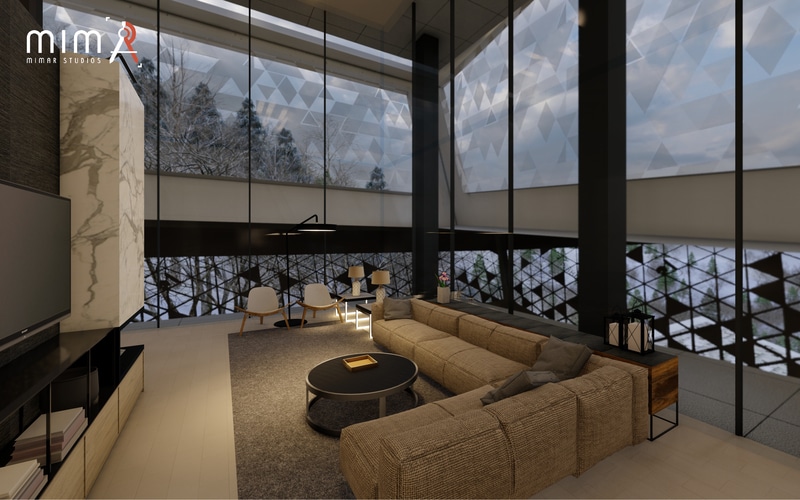
Interior designers use mood lighting or illumination that creates a specific mood. There are different types of light that connote different moods in a room, so how you use it can affect that mood.
The light that comes from nature can increase happiness and soothe a room, whereas fluorescent lighting feels cold and still. In order to enhance the mood of the space properly, it is important to understand the two types of lighting.
It’s easy to showcase your beautiful paint colors or that particular piece of furniture you’ve been dying to show off with natural light sources. Using a completely customized home, the designer is able to place the windows and doors precisely so that natural light cascades into any space. Curtains, shades, and drapes allow designers to manipulate the light in a room.
Natural lighting isn’t always enough or designers may want artificial lighting to create a particular mood or highlight a particular artwork. Here are some options for you:
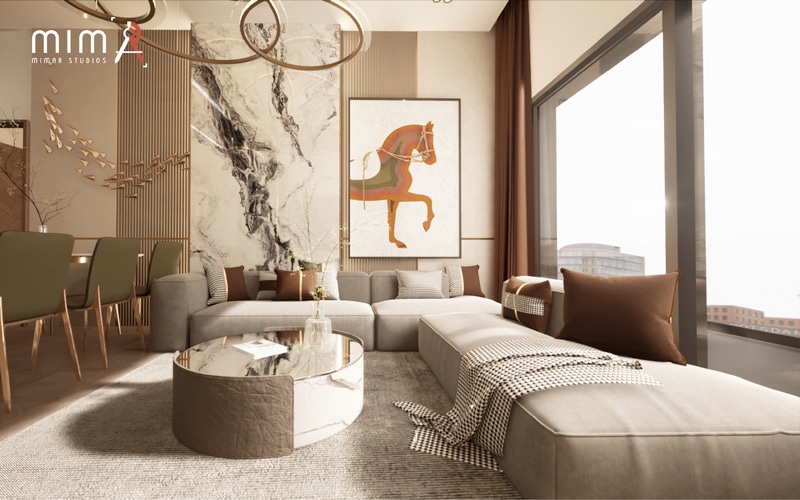
In interior design, color conveys certain messages and moods, as our brains have been trained to interpret them in particular ways. Using them to produce the desired feeling for your home is the job of the interior designer.
Color wheels aren’t important here, but we must understand that different colors evoke different opinions. The green color represents peace and tranquility, the red color is intense and represents hunger, and the purple color symbolizes royalty. It is important to plan the color scheme of your home by considering each of its rooms.
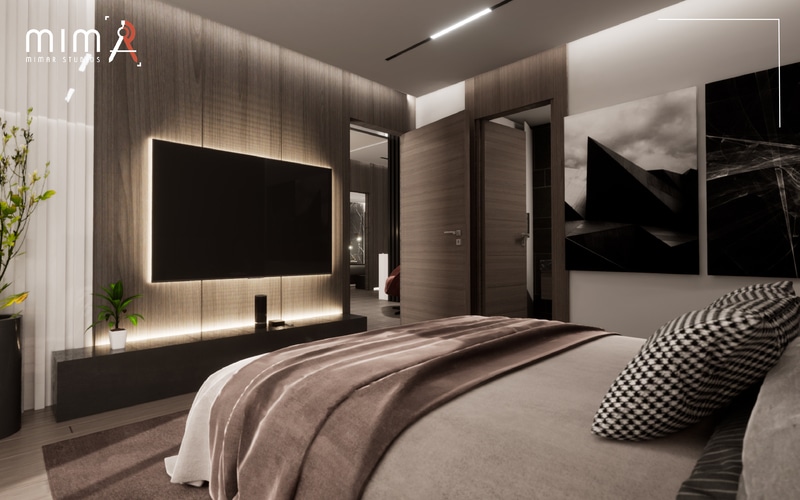
Usually, textures describe how something feels. However, interior designers also need to take into account how textures look and feel. There are two kinds of textures – actual texture and visual texture – and good designers can use both simultaneously for optimum effect.
It feels like this when a material is truly alive. Silk, for instance, feels smooth while linen can be crisp and rough. In contrast, leather has a different appearance from silk, which is also smooth.
The visual texture is the appearance of something to the eye. For instance, stone wallpaper isn’t exactly the same as real stone, but it gives the impression that it is, setting off a rustic, traditional look rather than a more contemporary one.
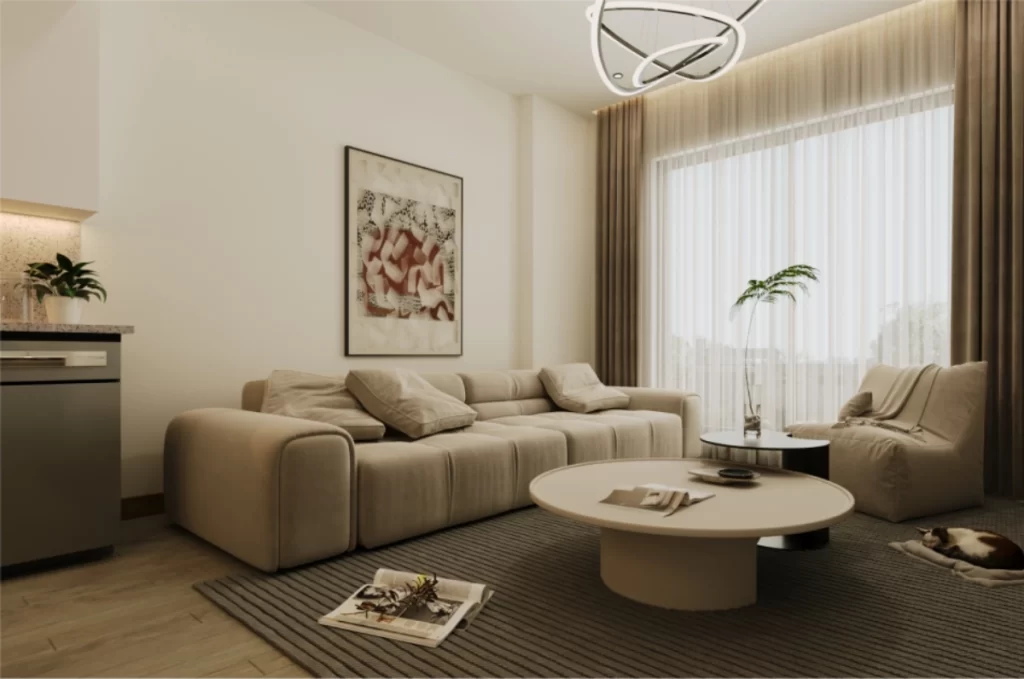
Balance is a fundamental principle of interior design, crucial for creating harmonious and visually appealing spaces. It involves the equal distribution of visual weight within a room, achieving a sense of equilibrium.
There are two main types of balance: symmetrical and asymmetrical. Symmetrical balance involves arranging elements in a space so that they are evenly weighted on either side of a central axis. This creates a sense of formality and stability, often seen in traditional interiors. On the other hand, asymmetrical balance involves arranging different elements to achieve balance without mirroring each other. This creates a more dynamic and visually interesting space, often seen in modern and eclectic designs.
Achieving balance in a room requires careful consideration of furniture placement, decor, and architectural features. By strategically arranging elements, designers can create a sense of harmony and visual stability, making the space feel more comfortable and inviting.
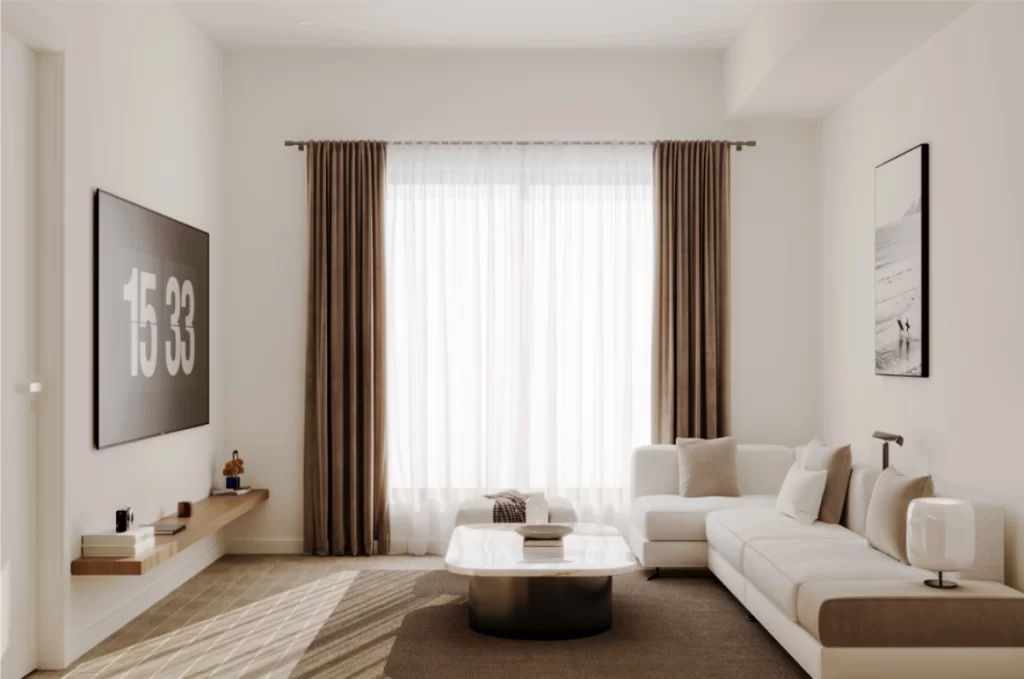
Rhythm is another important element of interior design, responsible for creating a sense of movement and flow within a space. It involves the repetition of visual elements such as color, pattern, or texture, which helps guide the eye through the room.
Repetition is key to creating rhythm in interior design. By repeating elements such as colors, patterns, or textures, designers can create a sense of continuity and cohesion throughout the space. This helps tie the various elements of the room together and creates a more unified and visually appealing environment.
Rhythm can be achieved in various ways, from repeating a single color or pattern throughout the space to using a variety of different elements in a coordinated way. By creating a sense of movement and flow, rhythm helps make a space feel more dynamic and engaging.
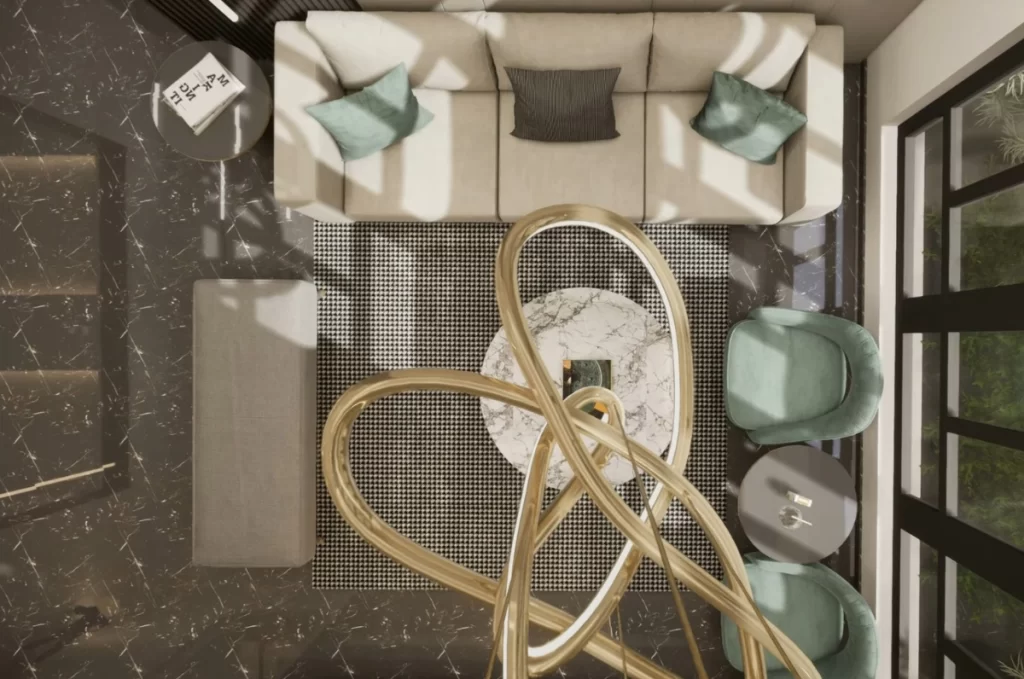
Emphasis, also known as focal point, is the area or object in a room that draws the most attention. It is a key element of interior design, responsible for creating visual interest and hierarchy within a space.
Emphasis can be achieved through various means, including color, contrast, and scale. For example, a brightly colored accent wall can serve as a focal point in a room, drawing attention and creating visual interest. Similarly, a large piece of artwork or a statement piece of furniture can act as a focal point, anchoring the room and providing a point of interest for the eye.
By creating a focal point, designers can help organize a space and create a sense of balance and visual hierarchy. This helps give the room a more cohesive and intentional look, making it feel more put together and visually appealing.
It is always necessary to combine these 7 elements of interior design to create the highest-quality interior. That’s when you’ll be able to transform your house into something you’ve never imagined because you understand how to mix, match, and balance colors, lines, and space.
Having trouble coming up with a unique way to decorate the interior of your home? Need advice on where to begin? Mimar offers free interior design consultation, and interior design services tailored to your dreams.
Find out more about our interior design process by visiting our website.